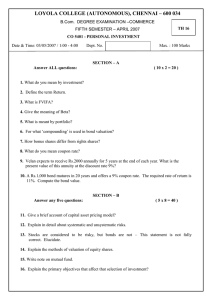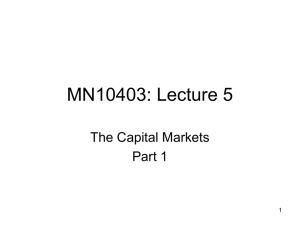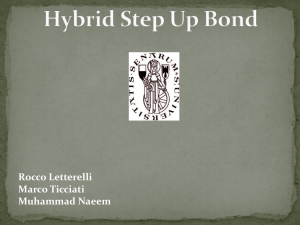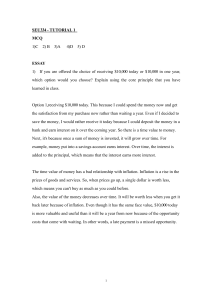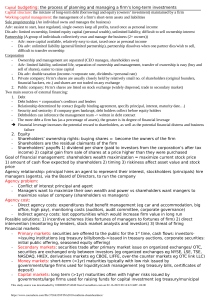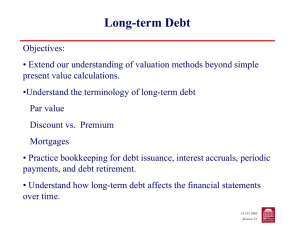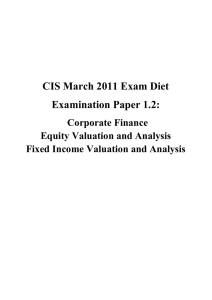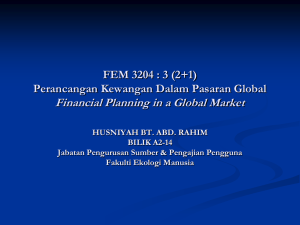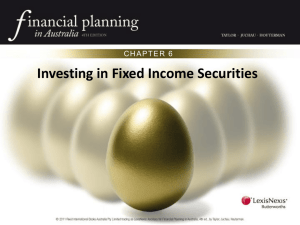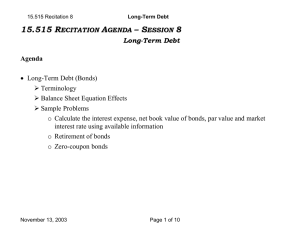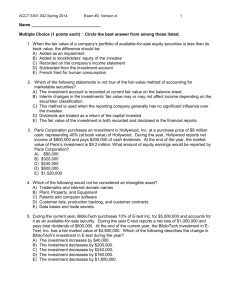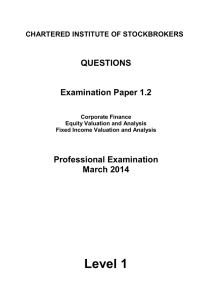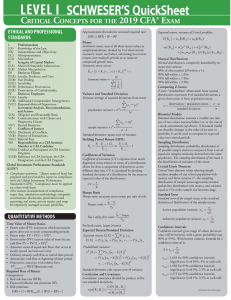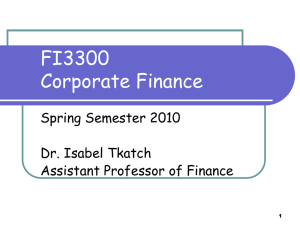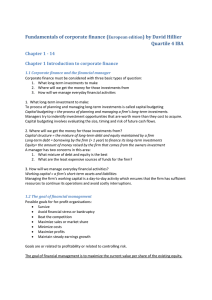File - Edu @ Thinus
advertisement
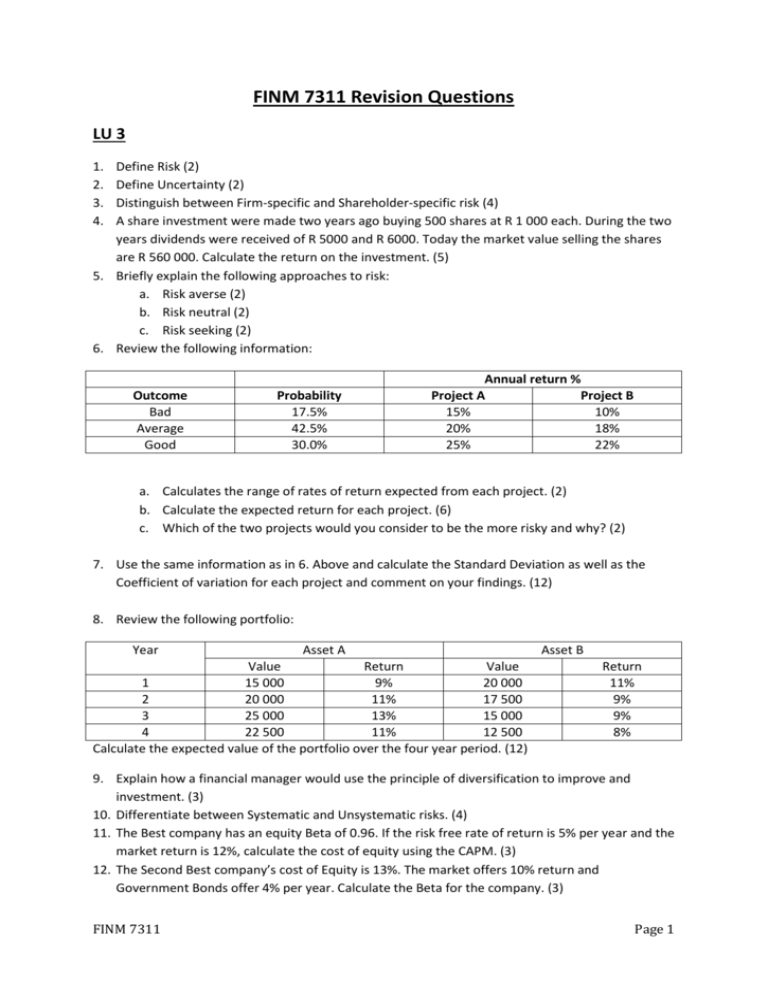
FINM 7311 Revision Questions LU 3 1. 2. 3. 4. Define Risk (2) Define Uncertainty (2) Distinguish between Firm-specific and Shareholder-specific risk (4) A share investment were made two years ago buying 500 shares at R 1 000 each. During the two years dividends were received of R 5000 and R 6000. Today the market value selling the shares are R 560 000. Calculate the return on the investment. (5) 5. Briefly explain the following approaches to risk: a. Risk averse (2) b. Risk neutral (2) c. Risk seeking (2) 6. Review the following information: Outcome Bad Average Good Probability 17.5% 42.5% 30.0% Annual return % Project A Project B 15% 10% 20% 18% 25% 22% a. Calculates the range of rates of return expected from each project. (2) b. Calculate the expected return for each project. (6) c. Which of the two projects would you consider to be the more risky and why? (2) 7. Use the same information as in 6. Above and calculate the Standard Deviation as well as the Coefficient of variation for each project and comment on your findings. (12) 8. Review the following portfolio: Year Asset A Asset B Value Return Value 1 15 000 9% 20 000 2 20 000 11% 17 500 3 25 000 13% 15 000 4 22 500 11% 12 500 Calculate the expected value of the portfolio over the four year period. (12) Return 11% 9% 9% 8% 9. Explain how a financial manager would use the principle of diversification to improve and investment. (3) 10. Differentiate between Systematic and Unsystematic risks. (4) 11. The Best company has an equity Beta of 0.96. If the risk free rate of return is 5% per year and the market return is 12%, calculate the cost of equity using the CAPM. (3) 12. The Second Best company’s cost of Equity is 13%. The market offers 10% return and Government Bonds offer 4% per year. Calculate the Beta for the company. (3) FINM 7311 Page 1 LU 4 1. The Third Best company expects a minimum real return of 3% a year on its capital investments. The current inflation rate is 6.5%. Calculate the nominal rate of return using the common approximation as well as Fisher’s formula. (5) 2. Briefly explain the following theories and how they each impacts on the yield curves: a. Expectations theory (3) b. Liquidity theory (3) c. Market segmentation theory (3) 3. Briefly explain what a risk premium is and name three (3) 4. Briefly define: a. Fixed rate bond (3) b. Government bonds (3) c. Zero coupon bonds (3) 5. What will you pay for a bond if you require a return of 8%. It was issued for 6 years at par value of R15 000 and a coupon rate of 10%? (4) 6. Will you buy the following bond at a premium or a discount if you buy it today? Six year bond with par value of R30 000 and a semi-annual coupon rate of 10%, and your required rate of return is 6% per annum. (6) 7. What will your asking price be for the bond in 6. Above at the end of year three? (4) LU 5 1. Discuss four differences between debt and equity as sources of funding for businesses. (8) 2. Discuss two (2) differences in rights between ordinary shareholders and preference shareholders (4) 3. The Fourth Best company expects the following cash flows: a. 2015 R 175 000 b. 2016 R 210 000 c. 2017 R 240 000 d. 2018 R 255 000 e. 2019 R 300 000 The company’s cost of equity is 12.5%, it has 15 000 000 shares authorised and 10 000 000 issued at R2 each currently trading at R3 each. It has bank borrowings of R 20 million on which they pay 10% interest per year. If they expect the cash flows of the company to grow by 3% from 2020 forward, what is the value of the company? (15) 4. The Fifth Best company made a profit of R20 million during 2014. They have 40 000 authorised (20 000 issued) shares and have a P/E ratio of 6:1. Calculate the value of the company. (3) 5. Define and explain the differences between Book value and Liquidation value methods of valuation on a company. (6) FINM 7311 Page 2
